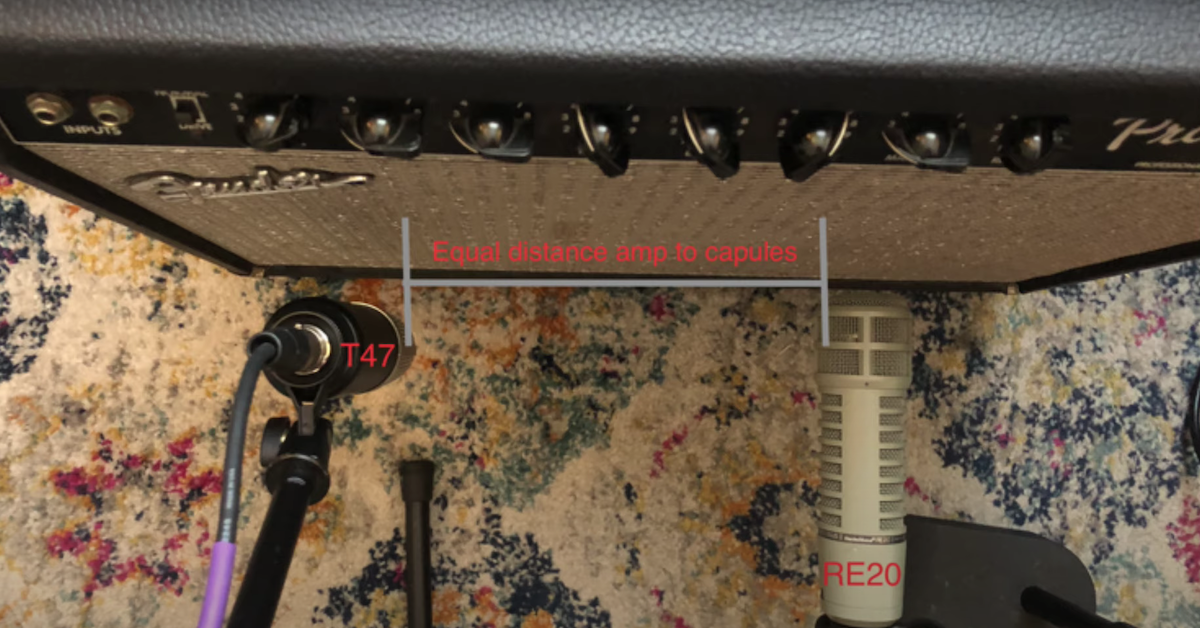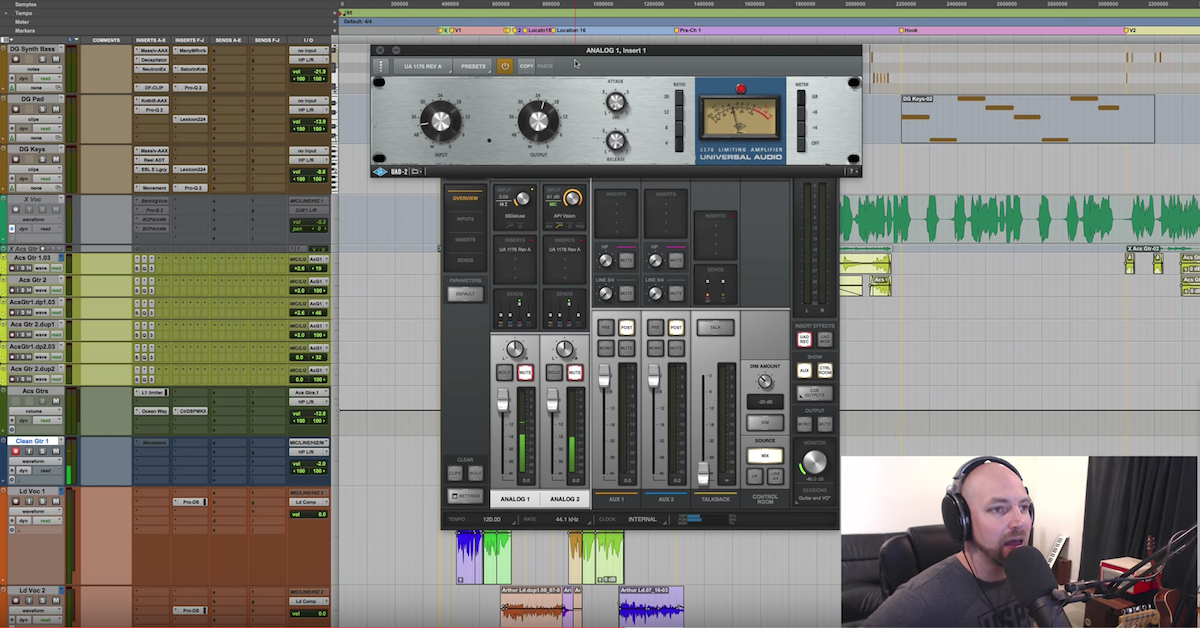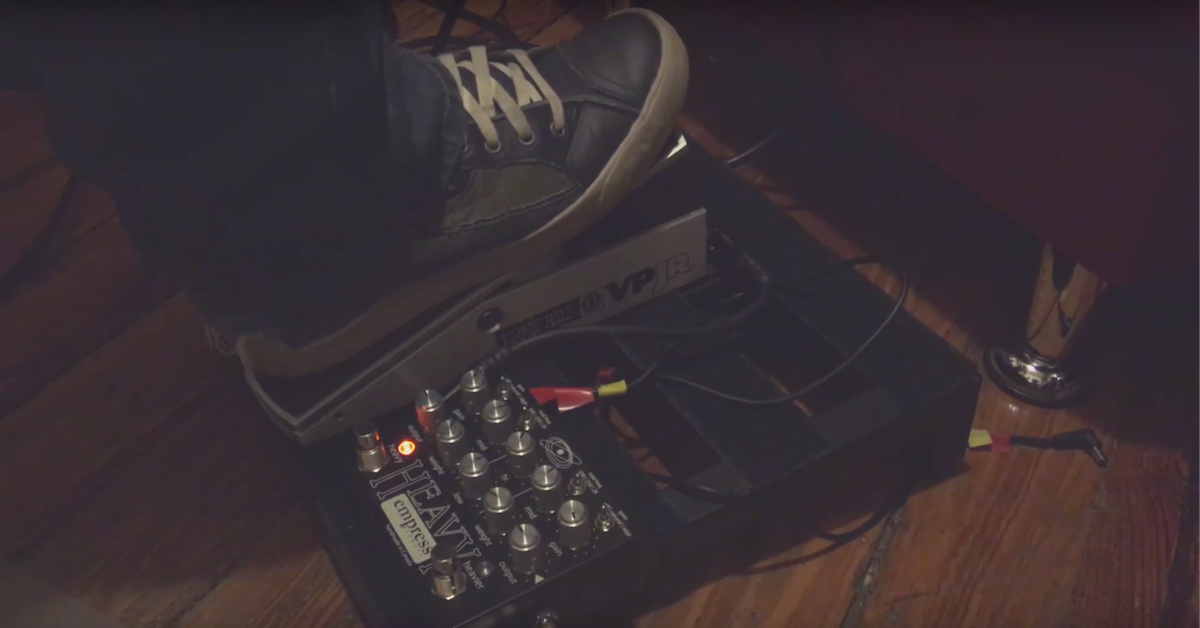20 Pitfalls to Avoid When Recording Electric Guitar
Article Content
1. Not Checking Phase
Phase is a complicated topic and can take years to hear when it needs to be adjusted. When you record the same source with more than one mic, you’ll always have some amount of phase discrepancy. The goal is to get the signals as close to in phase as possible. Let’s say you have two mics on an acoustic guitar. Sound is going to reach each of those mics at different times. Depending on the timing differences, some frequencies may cancel each other out.
By adjusting the distances of mics at the source, or by moving the recorded audio files or using a plugin, you can adjust the timing differences between multiple audio captures to improve their phase relationship.
A good place to start checking phase is to flip the polarity switch on your mic preamp for one of the mics you’re using to record the same source and listen to which position has a loss of bass. When a signal is out of phase, it loses low end. But, a signal with poor phase coherency can also affect treble and midrange frequencies.
I’m a fan of the Auto-Align plugin that corrects the phase relationship between multiple mics. Remember, just because the sources are more in phase doesn’t mean the sound is improved. So, even when using Auto-Align, be sure to compare. Auto-Align is not only an excellent tool for correcting phase but also for training your ear to hear phase problems.
Whether you’re getting room sounds with a real mic or using a plugin like the UAD Ocean Way, make sure to check the phase between the room emulation plugin and the amp mic. Just because it’s a plugin doesn’t mean it won’t have phase issues.
In the event that you’re going to take a DI from the guitar to blend in an amp sim, make sure to check the phase between the DI and miked amp. The DI is out of phase with the miked amp most of the time.
2. Gain Staging
Guitar amps are difficult in the sense that the volume knob dramatically affects the tone of the amp. An amp can sound quite different from volume 3-5 on a tube amp. Let the amp do the heavy lifting as much as you can. Before you place a pedal in front of the amp, get the amp speaking favorably. Even if you’re using preamp gain on an amp, experiment with the master volume.
Typically a master volume amp with a lot of preamp gain and not much master volume sounds thin. Ideally, you’ll want to combine preamp and power amp saturation.
There are many colors that you can conjure from a mic pre. Some mic pre’s have a gain control and an output volume control. As an example, on Neve 1073 preamps, I like to push the gain, so the preamp overdrives a little. There is a specific crunch that happens from a Neve. More colors at your fingertips.
3. Not Using the Volume Knob
There are a lot of colors available from the guitar. Rolling the guitar volume back a little, or a lot, changes the tone of the instrument. When getting your tones, experiment with volume knob placement for subtle adjustments in treble and bass.
4. Using Buffers Before Fuzz Pedals
Germanium fuzz circuits don’t really like many effects before them, especially buffered pedals. Placing a buffer or buffered pedal before a germanium fuzz can cause it to act oddly.
5. Not Experimenting with the Signal Chain
Guitarists can get conservative with effects order over time. Moving the placement of effects can create unusual sounds. It’s for this reason that I don’t like working from fixed pedalboards in session. I want to experiment and move the delay before an overdrive.
6. Not Using a Great Tuner
Tuners are way underappreciated. Guitarists often spend hundreds on an overdrive pedal but skimp on tuners. A great tuner is worth every penny in the studio. Check out the Sonic Research ST-300 Turbo Tuner. It’s my go-to tuner for everything!
7. Not Committing to Sounds
Modern recording engineers are afraid to commit to tones. There is a mindset that you need flexibility later, which is overrated. Yes, there is a learning curve to getting sounds. You will make some mistakes at first. But, capturing the tones as close to mixing helps you produce a song. It causes you to make better decisions when things sound closer to the final.
8. Over Compressing
I love the sound of compressors. But, often, I don’t compress that much. Sometimes gobs of compression is needed for the tone. But, this shouldn’t be your default. If you’re using compression on guitars, try just barely moving the needle at first. Then add at will. But start light.
9. Not Using an Amp Attenuator
Nothing sounds like power tube saturation. If you can play an amp in your studio, but not very loud, look into an amp attenuator like the Weber Mass 200. You won’t be able to record at whisper volumes, but you can get power tube saturated tones at reasonable volumes.
10. Reamping When It’s Not Necessary
If you have no other option than to reamp, then, by all means, go for it. But, if you can choose whether to record an amp or reamp — record the amp! After A/B-ing an amp and a reamped amp, I can tell you it doesn’t sound the same. The amp recorded live always sounds better if appropriately recorded.
More options don’t always mean better tones.
11. Not Moving the Amp
Often we just put down the guitar amp and throw a mic in front of it. But, before you start setting up a mic stand, try moving the guitar amp to different parts of the room and listen. Get the amp to sound great before you even put a mic anywhere near it. Listen to how the room reacts.
12. Mixing the Amp the Same Way Every Time
I try to avoid the autopilot method for miking or mixing electric guitar. I listen to every sound and then apply whats needed. Sometimes, I need to roll off frequencies below 100 Hz — other times I don’t. There are times where I add compression, and times I don’t. Always keep in mind that recoding is situational. You need a few tricks in your back pocket. But, don’t just use them without assessing.
13. Expecting One Amp to Sound Like Another
There are a million pedals on the market that promise to make your amp sound like a Marshall, Vox or Fender. Here’s the truth: They don’t!! They can imply certain characteristics of an amp, but you can’t make a Fender sound like a Marshall. There, I said it. It might not be what you want to hear. Pedals often compress in a more aggressive way then the real amps do or simply apply an EQ to mimic amps. There is a specific EQ curve, feel and saturation that can only be attained when using the real model of an amp.
Make sure you buy an amp that lives in the tonal vicinity of what you like. You can make subtle adjustments from there, but you can’t reinvent an amp.
14. Not Experimenting with Saturation
The guitar amp and mic preamp are not the only places you can induce overdrive. You can use plugins like the UAD Studer A840, the Thermonic Culture Vulture or the Soundtoys Decapitator (to name just a few). Sometimes the sound you hear on old recordings is a combination of different elements slightly overdriving.
15. Not Using Different Guitars on Different Parts
Stacking the same guitar into the same pedal into the same amp for every overdub on a song is going to present frequency clashing. You’re essentially stacking the same frequency over and over. Changing even just the guitar can create a different frequency ID, thus making it easier to mix.
16. Using Too Much Low End
You don’t need as much low end in your guitar as you think. I’m not suggesting you EQ all the low end out. Use your ears, but, remember you have to leave room for the bass drum and bass guitar.
A note to amp sim users: A lot of presets are bass-heavy. I believe this is for the immediate gratification effect. Make sure the low end isn’t pushing too hot.
17. Not Simplifying Your Signal Chain
I’m not a fan of recording through pedalboards. I want the shortest path to the amp because it sounds full range with minimal loss. In live settings, you can’t avoid running through multiple pedals. But, in the studio, I disassemble pedalboards not only for the reason of routing flexibility but for signal purity.
18. Not Experimenting with Cable Quality or Length
When a guitarist is playing live, they may need long cable runs to move around the stage or get from their pedalboard to the amp. Long cable lengths change the tone of your guitar. A common symptom is high-end loss. Some guitarists like this high-end attenuation, but I’m not a fan. Consider that cable length and quality will change the tone of your guitar. Try all variations to hear what works for you.
19. Not Adjusting EQ on the Amp
Don’t be afraid to twist those EQ knobs on your amp! I’ve seen many guitarists have a set it and forget it approach with their amps. If a tone doesn’t sound right, always start your tweaks at the amp rather than outboard EQ.
20. Not Listening
Don’t forget to listen back to what you’re recording before you dig too deep into tracking. Stop and fix a bad sound.






